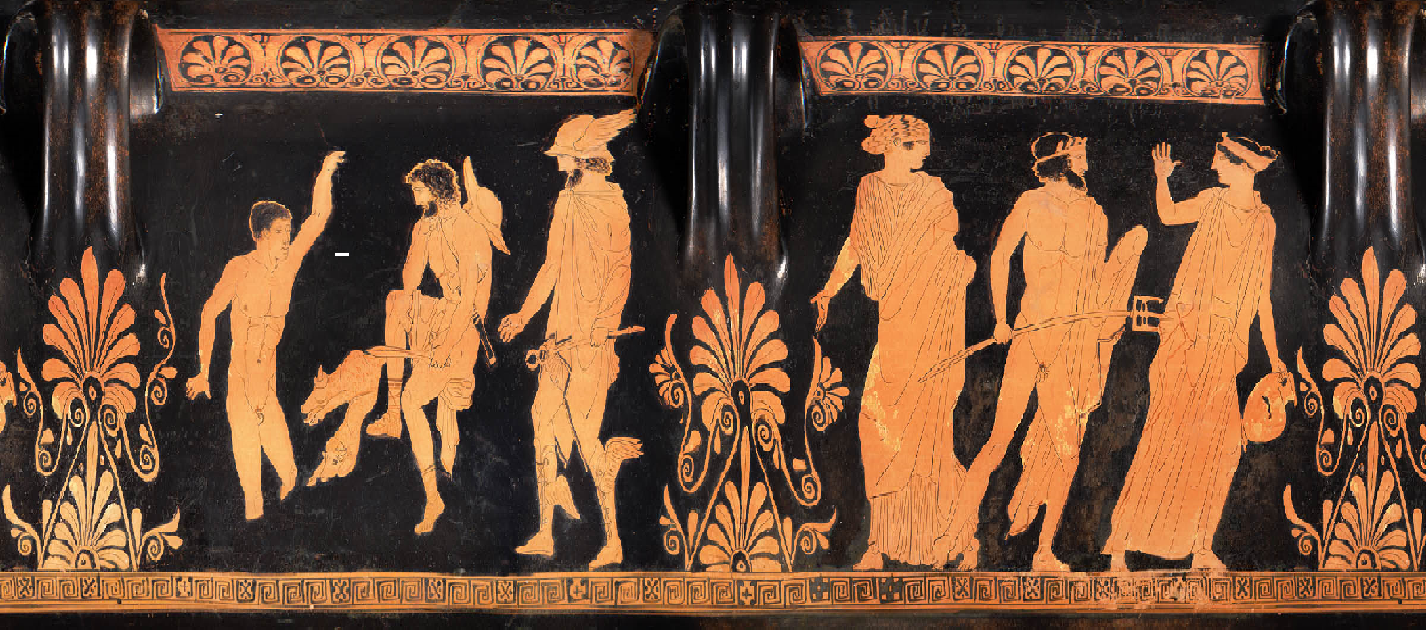
Одиссей. Человек в истории. 2021: Социальные категории и их интерпретация на языке метафор (pages 145-176) | Махов Александр Евгеньевич
Морально-социальное учение стоицизма, хорошо известное в среде гуманистов Раннего Нового времени, популяризируется в книжной эмблематике этой эпохи. Инструментом такой популяризации становится создаваемая в эмблеме визуальная метафора, способная посредством конкретных образов передавать отвлеченные идеи. Основные стоические концепты (такие как добродетель, бесстрастие-apatheia, постоянство, терпение и пр.) находит в визуальном языке эмблемы чрезвычайно разнообразные метафорические эквиваленты, где в качестве метафор могут выступать и неодушевленные предметы (скала, кремень, наковальня, щипцы, куб, весы), и живые существа (зимородок, горлица, медведь). Эмблематика, будучи своего рода ars inveniendi, выступает как механизм, продуцирующий новые метафоры для выражения старых смыслов. Однако переосмыслению в духе стоического учения подвергаются и некоторые традиционные метафоры, восходящие к античности (например, платоновское сравнение человеческой души с колесницей, влекомой двумя конями – «разума» и «страсти»).
The moral and social doctrine of Stoicism, well known among Early Modern humanists, was popularized in the emblem books of the time. The tool of this popularization was the visual metaphor capable of conveying abstract ideas through concrete images. The main stoic notions (such as virtue, apatheia as a complete freedom from passions, constancy, patience, etc.) have found extremely diverse metaphorical equivalents in the visual language of emblems, where inanimate objects (e.g. rock, flint, anvil, tongs, cube, scales) as well as living creatures (kingfisher, turtledove, bear) could equally function as metaphors. Emblematics, being a kind of ars inveniendi, acted as a mechanism for inventing new metaphors to express old meanings. However, some traditional metaphors dating back to antiquity (for example, Plato’s comparison of the human soul to a chariot pulled by two horses – “reason” and “emotion”) were also rethought in the spirit of the Stoic doctrine.
References
ИСТОЧНИКИ
Фрагменты ранних стоиков. В 3 т. Т. 1. Зенон и его ученики / Пер., комм. А.А. Столярова. М., 1998.
Alciato A. Emblemata. Lugduni, 1550.
Alciato A. Emblematum libellus. Venetiis, 1546.
Boissard J. J. Emblematum liber / Emblemes latins [...] avec l’interpretation Françoise. Metz, 1588.
Boissard J. J. Emblematum liber. Frankfurt, 1593.
Camerarius J. Symbolorum et emblematum ex re herbaria desumtorum centuria una. Norimberg, 1590.
Camerarius J. Symbolorum et emblematum ex animalibus quadrupedibus desumtorum centuria altera. Norimberg, 1595.
Corrozet G. Hecatomgraphie. P., 1540.
Coustau P. Pegma. Lugduni, 1555.
Coustau P. Pegme. Lyons, 1560.
Covarrubias Orozco S. de. Emblemas morales. Madrid, 1610. Lib. II.
Érasme de Rotterdam. Les adages / Sous la direction de J.-Ch. Saladin. P., 2013. Vol. 1–5.
Holzwart M. Emblemata Tyrocinia (1581) / Hrsg. von P. von Düffel, Kl. Schmidt. Stuttgart, 2006.
Isselburg P. Emblemata politica. Nürnberg, 1640.
Junius H. Emblemata. Antverpiae, 1565.
La Perrière G. de. La morosophie. Lyon, 1553.
Lipsius J. De Constantia Libri Duo. Lugduni, 1592.
Lipsius J. Sylloge epistolarum a viris illustribus scriptarum. Leiden, 1727. T. 2.
Reusner N. Aureola Emblemata. Straßburg, 1587.
Rollenhagen G. Nucleus emblematum selectissimorum. Arnheim, 1611.
Rollenhagen G. Selectorum emblematum centuria secunda. Ultraiecti: ex officina Crispiani Passaei. 1613.
Sambucus J. Emblemata ... altera editio. Antverpiae: ex officina Chr. Plantini, 1566.
Schoonhovius F. Emblemata partim Moralia partim etiam Civilia. Goudae. 1618.
Vaenius O. Quinti Horatii Flacci emblemata. Antverpiae, 1612.
Whitney G. Choice of Emblemes. Leiden, 1586.
ЛИТЕРАТУРА
Махов А.Е. Эмблематика. Макрокосм. М., 2014.
Audano S. La «consolatio» semiseria di Ovidio (Pont. IV, 11) // Sileno. Rivista semestrale di studi classici e cristiani. Lugano, 2016. N 2.
Bath M. Applied Emblematics in Scotland: Painted Ceilings, 1550–1650 // Emblematica. An Interdisciplinary Journal for Emblem Studies. 1993. Vol. 7. N 2.
Brunon C.-F. Les figures de la Concorde selon Horapollon // Le point de vue de l’Emblème / Éd. P. Choné. Dijon, 2001.
Callahan V. Andrea Alciato’s Palm Tree Emblem: A Humanist Document // Emblematica. An Interdisciplinary Journal for Emblem Studies. 1992. Vol. 6. N 2.
Callahan V.W. An Interpretation of Four of Alciato’s Latin Emblems // Emblematica. An Interdisciplinary Journal for Emblem Studies. 1991. Vol. 5. N 2.
Duarte S. Entre déterminisme et libre arbitre: les images emblématiques de la Fortune dans le roman néo-grec espagnol (1604–1657). Thèse en vue de l’obtention du doctorat de lettres romanes. Université Blaise Pascal – Clermont-Ferrand II, 2013.
Heesakkers Ch.L. Hadriani Iunii Medici “Emblemata” (1565) // Mundus Emblematicus: Studies in Neo-Latin Emblem Books / Ed. K.A.E. Enenkel, A.S.Q. Viss. Turnhout, 2003.
Klecker E., Schreiner S. How to Gild Emblems. From Mathias Holtzwart’s “Emblematum Tyrocinia” to Nicolaus Reusner’s “Aureola Emblemata” // Mundus Emblematicus: Studies in Neo-Latin Emblem Books / Ed. K.A.E. Enenkel, A.S.Q. Viss. Turnhout, 2003.
Kraye J. 'Απάθεια and Προπάθειαι in Early Modern Discussions of the Passions: Stoicism, Christianity and Natural History // Early Science and Medicine. 2012. Vol. 17. N 1/2.
McKeown S. The Emblem Paintings at Skokloster: A Philosophical Gallery from Sweden’s Age of Greatness // Emblematica. An Interdisciplinary Journal for Emblem Studies. 2003. Vol. 13.
Panofsky E. Studies in Iconology: Humanistic themes in the art of the Renaissance. N.Y., 1972.
Saunders A. The Sixteenth-Century French Emblem Book: A Decorative and Useful Genre. Geneva, 1988.
Veldman I., Klein Cl. The Painter and the Poet: The Nucleus Emblematum by De Passe and Rollenhagen // Mundus Emblematicus: Studies in Neo-Latin Emblem Books / Ed. K.A.E. Enenkel, A.S.Q. Viss. Turnhout, 2003.
Wade M.R. Emblems and German Protestant Court Culture: Duchess Marie Elisabeth’s Ballet in Gottorf (1650) // Emblematica. An Interdisciplinary Journal for Emblem Studies. 1995. Vol. 9. N. 1.